
Starting June 1st, 2023 Our warehouse fee will be $0.65/cubic foot per month
In effort to lower the warehouse storage fee during inflation, we have went narrow aisle racking.This construction took us four months but the project is finally completed. With narrow aisle racking, we are able to drop storage by 24%.We as partners will go through this inflation together.
07/16/2024
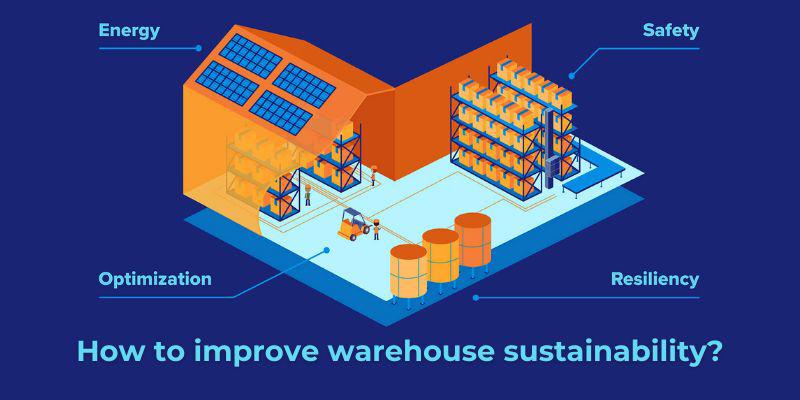
Sustainability and the pursuit of a greener future have gained paramount importance across all sectors, particularly in warehousing and fulfillment logistics. As a crucial component of the global supply chain, the logistics industry encounters unique challenges due to its extensive energy consumption, waste production, and transportation emissions.
Nevertheless, these challenges present significant opportunities to adopt practices that mitigate environmental impact while simultaneously improving business efficiency.
This article of Worldcraft Logistics delves into practical strategies that companies can employ to boost the eco-friendliness of their warehouse operations. By implementing these measures, businesses not only contribute to a more sustainable future but also realize substantial cost savings.
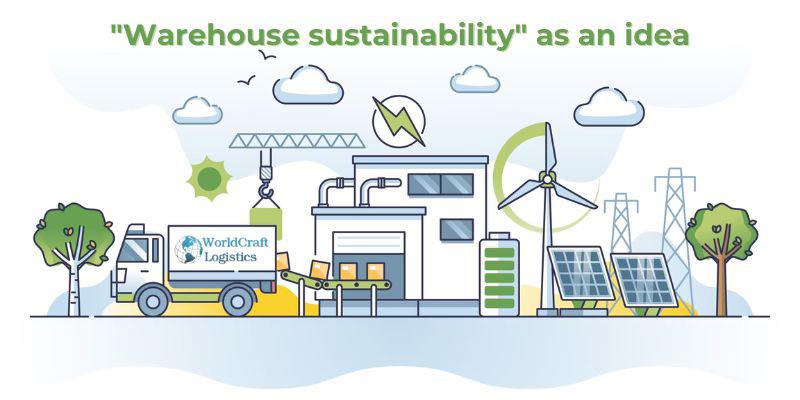
Sustainable warehouse logistics is a dynamic field that focuses on optimizing operational efficiency while minimizing environmental impact across multiple critical areas. These encompass energy management, waste reduction, green building design, and innovative transportation strategies. Here's a breakdown of warehouse sustainability:
☑️ Energy management involves assessing energy sources, consumption patterns, and efficiency measures.
☑️ Waste and resource use evaluates waste management practices, resource efficiency, and sustainable material usage.
☑️ Building and infrastructure considers sustainable materials, insulation, natural lighting, and overall environmental footprint.
☑️ Transportation and logistics focuses on fuel efficiency, emissions reduction, and logistics optimization.
☑️ Operational practices cover inventory management, shipping/receiving, and technology use for efficiency.
☑️ Employee well-being ensures health and safety through air quality, ergonomics, and workplace environment.
☑️ Regulatory compliance involves meeting environmental laws and standards.
☑️ Sustainability initiatives include renewable energy projects, certifications, and community engagement.
Understanding these aspects is crucial for evaluating and enhancing your warehouse's sustainability. Conducting an assessment is key to identifying and implementing necessary improvements.
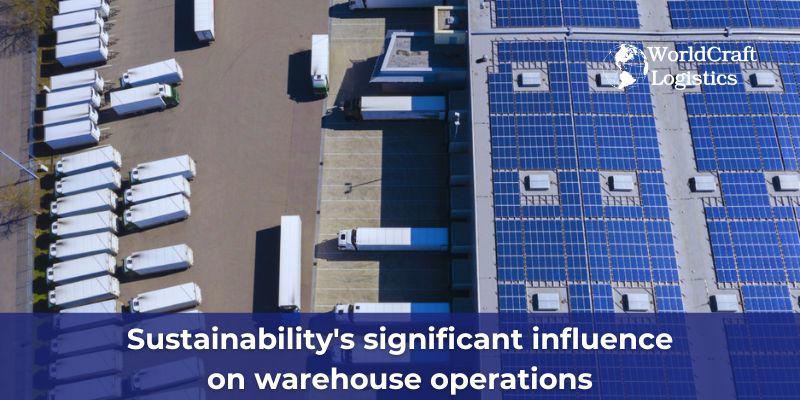
Sustainable practices enhance warehouse operations, yielding a wide range of benefits:
Higher Efficiency: Upgrading to energy-efficient lighting and installing smart thermostats optimize energy consumption, resulting in improved overall efficiency.
Cost Savings: Transitioning to renewable energy sources and implementing waste reduction strategies significantly lower utility bills and reduce disposal costs.
Reduced Carbon Footprint: Adopting green initiatives helps warehouses minimize pollution and decrease greenhouse gas emissions, contributing to a healthier environment.
Improved Employee Morale and Brand Image: Operating in a sustainable environment boosts employee satisfaction and fosters a positive public perception, enhancing the company’s brand image.
Read more:
👉 The creative process of Crating & Packaging solutions
👉 Consolidation Warehousing: A comprehensive guide to Tips & Benefits
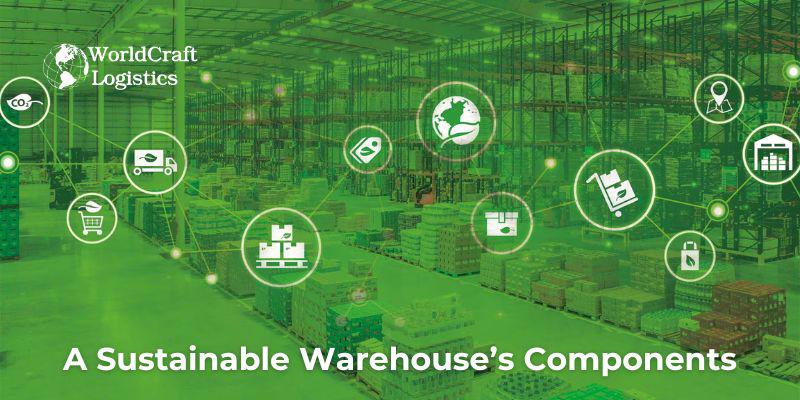
A sustainable warehouse integrates various components and practices aimed at reducing environmental impact, conserving resources, and promoting operational efficiency. Here are the key components of a sustainable warehouse:
💡 LED Lighting: Uses less energy and has a longer lifespan compared to traditional lighting.
💡 Skylights and Natural Light: Reduces the need for artificial lighting during the day.
💡 Energy-Efficient HVAC Systems: Optimizes heating, ventilation, and air conditioning to reduce energy consumption.
💡 Solar Panels: Generates renewable energy on-site.
🔋 Recycled and Sustainable Materials: Use of materials that are recycled or sustainably sourced for construction and renovation.
🔋 Low VOC (Volatile Organic Compounds) Paints and Finishes: Improves indoor air quality.
💧 Rainwater Harvesting Systems: Collects and uses rainwater for non-potable applications.
💧 Low-Flow Fixtures: Reduces water usage in restrooms and kitchens.
💧 Water Recycling Systems: Recycles water for reuse in cooling systems and irrigation.
♻️ Recycling Programs: Comprehensive systems for recycling paper, plastics, metals, and other materials.
♻️ Composting: For organic waste from cafeterias and landscaping.
♻️ Waste-to-Energy Systems: Converts waste into energy through processes like incineration or anaerobic digestion.
🌎 Automated Storage and Retrieval Systems (AS/RS): Increases storage density and reduces the need for lighting and climate control in large areas.
🌎 Electric and Hybrid Material Handling Equipment: Reduces greenhouse gas emissions compared to fossil fuel-powered equipment.
🌎 Eco-Friendly Packaging: Use of biodegradable or recyclable packaging materials.
🔗 IoT Sensors: Monitors energy usage, temperature, humidity, and occupancy to optimize operations.
🔗 Warehouse Management Systems (WMS): Increases efficiency and reduces waste through better inventory management and process optimization.
🔗 Predictive Maintenance: Uses data analytics to predict equipment failures and reduce downtime.
🔔 Electric or Hybrid Fleet: Reduces emissions from transportation.
🔔 Optimized Routing and Scheduling: Minimizes fuel consumption and emissions through efficient logistics planning.
🔔 Collaborative Shipping: Partners with other companies to maximize load capacities and reduce the number of trips.
👤 Green Spaces and Natural Elements: Incorporates plants and natural light to improve the work environment.
👤 Ergonomic Workstations: Enhances employee comfort and reduces the risk of injuries.
👤 Sustainability Training: Educates employees on sustainable practices and encourages participation.
🗒 LEED (Leadership in Energy and Environmental Design): Certification for environmentally friendly buildings.
🗒 ISO 14001: International standard for environmental management systems.
🗒 BREEAM (Building Research Establishment Environmental Assessment Method): Certification for sustainable building performance.
🔴 Local Sourcing: Reduces carbon footprint by sourcing materials and products locally.
🔴 Community Engagement: Involves the local community in sustainability initiatives and supports local environmental projects.
🔴 Transparency and Reporting: Regularly reports on sustainability goals and progress to stakeholders.
By integrating these components, a sustainable warehouse can significantly reduce its environmental impact while improving efficiency and creating a healthier work environment.
When considering sustainability and reducing greenhouse gas emissions, transportation often comes to mind first. However, it's crucial to recognize that buildings account for a significant 41 percent of the energy consumption in the United States, surpassing the 29 percent consumed by the transportation sector. This substantial energy use in buildings highlights the importance of focusing on energy efficiency in these structures. Furthermore, as warehouses increasingly adopt automation, their energy demands rise correspondingly, making the need for energy-efficient practices even more critical.
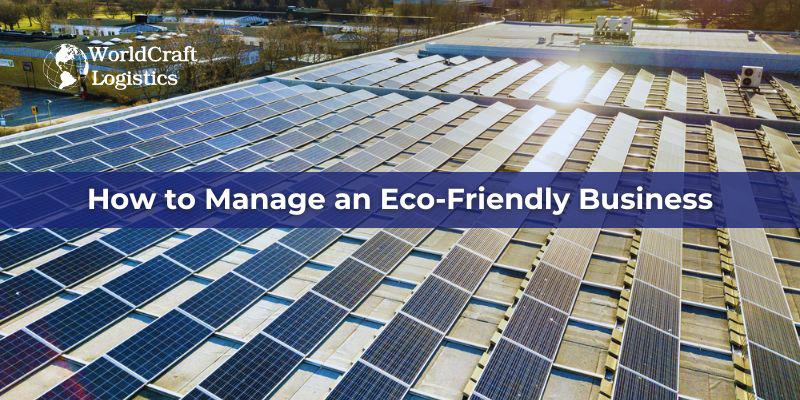
Implementing green storage solutions in warehouses can significantly enhance sustainability efforts. This includes:
Energy-Efficient Lighting: Utilizing LED lights and smart lighting systems to reduce energy consumption.
Renewable Energy: Installing solar panels or wind turbines to power warehouse operations.
Waste Reduction Programs: Implementing recycling and composting systems to minimize waste.
Sustainable Building Materials: Using eco-friendly materials for construction and insulation to reduce environmental impact.
Water Conservation: Installing low-flow fixtures and rainwater harvesting systems to reduce water usage.
Collaboration and alliances are crucial for achieving sustainability goals. Key strategies include:
Partnering with Green Suppliers: Working with suppliers who prioritize sustainable practices ensures the entire supply chain is environmentally friendly.
Industry Alliances: Joining industry groups and alliances that promote sustainability can provide access to shared resources, knowledge, and best practices.
Public-Private Partnerships: Collaborating with government agencies and non-profit organizations can lead to innovative solutions and access to grants and incentives for green initiatives.
Employee Engagement: Involving employees in sustainability efforts through training and incentive programs can drive internal support and innovation.
Focusing on client needs and offering financial incentives can promote sustainable practices:
Customer Education: Informing clients about the benefits of sustainable practices and how they can contribute to environmental efforts.
Eco-Friendly Products and Services: Offering products and services that are sustainably sourced and produced.
Incentives for Green Choices: Providing discounts or rewards for clients who choose eco-friendly options or participate in recycling programs.
Transparent Reporting: Sharing sustainability reports and progress with clients to build trust and demonstrate commitment to environmental responsibility.
By prioritizing green storage possibilities, fostering collaboration, and focusing on client needs with financial incentives, businesses can effectively manage eco-friendly operations and contribute to a more sustainable future.
Utilizing cutting-edge technology is essential for long-term viability across industries today. By integrating automation, IoT for real-time data insights, AI for predictive analytics, and cloud computing for scalability and efficiency, businesses can streamline operations, enhance sustainability, and maintain competitiveness. Embracing technologies like blockchain for transparency and VR/AR for enhanced training further boosts efficiency and reduces costs, ensuring businesses stay resilient and adaptive in a rapidly changing market.
Zero-Emission Vehicles and Electric Forklifts: Some warehouses are transitioning their fleet of vehicles and forklifts to zero-emission options, such as electric vehicles (EVs) and electric forklifts. By eliminating or reducing emissions from fossil fuels, these warehouses lower their carbon footprint and improve air quality within their facilities. 👉 See more: Top 10+ Types of Forklifts, Uses, and Classifications
Automated Energy Management Systems: Implementing advanced energy management systems that use sensors and data analytics to optimize energy usage can significantly reduce energy consumption. These systems can adjust lighting, HVAC, and other energy-intensive operations based on real-time data, ensuring resources are used efficiently and reducing overall energy costs.
Vertical Farming and Urban Agriculture: Warehouses located in urban areas are increasingly adopting vertical farming techniques. These methods involve growing crops in vertically stacked layers, using hydroponics or aeroponics systems. This approach not only utilizes unused vertical space but also reduces transportation distances for fresh produce, lowering carbon emissions associated with food transportation and storage.
These examples highlight innovative approaches to warehouse sustainability that address energy efficiency, emissions reduction, and resource optimization.
The concept of warehousing can be leveraged for sustainable distribution management in several ways:
Location Optimization: Place warehouses closer to markets or hubs to reduce transportation distances and emissions.
Multi-modal Transportation: Use rail, waterways, and trucks efficiently to minimize fuel use and environmental impact.
Efficient Inventory Management: Adopt cross-docking and just-in-time practices to reduce storage needs and waste.
Green Building Design: Construct warehouses with sustainable materials and energy-efficient features.
Reverse Logistics: Develop systems for product returns and recycling to minimize landfill waste.
Collaborative Supply Chains: Partner with stakeholders to optimize packaging and transportation efficiency.
Technology Integration: Use IoT and data analytics to optimize operations and reduce energy consumption.
Implementing these strategies can promote sustainable distribution management while reducing costs and environmental impact.
At first glance, the environmental impact of warehousing is highly visible. Business parks often house numerous warehouse and distribution buildings, which require a large physical footprint and substantial space, making them immediately recognizable.
The developmental phase of these facilities consumes a significant portion of the natural environment, with heavy equipment fuel consumption being a temporary but impactful necessity. This consumption continues post-development as transportation vehicles carry out ongoing shipping activities.
Warehouses also demand considerable power to operate, placing increased strain on local infrastructure to meet their energy needs.
Additionally, waste generation is an inherent part of warehousing operations. The amount of waste produced is directly related to the type of warehousing and how effectively it manages or controls waste.
With the warehousing industry experiencing an accelerating compound annual growth rate (CAGR) of 6% to 7%, largely driven by the demand for refrigeration for frozen food, there is no doubt that the environment will continue to feel the impact unless measures are implemented to mitigate negative effects.
A "sustainable warehousing framework" refers to a structured approach or set of guidelines that warehouses and logistics operations adopt to ensure their activities are environmentally, socially, and economically sustainable. It typically includes strategies and practices aimed at minimizing environmental impact, promoting resource efficiency, and fostering social responsibility throughout warehouse operations and supply chain management.
SEO
Digital Marketing/SEO Specialist
Simon Mang is an SEO and Digital Marketing expert at Wordcraft Logistics. With many years of experience in the field of digital marketing, he has shaped and built strategies to effectively promote Wordcraft Logistics' online presence. With a deep understanding of the logistics industry, I have shared more than 500 specialized articles on many different topics.
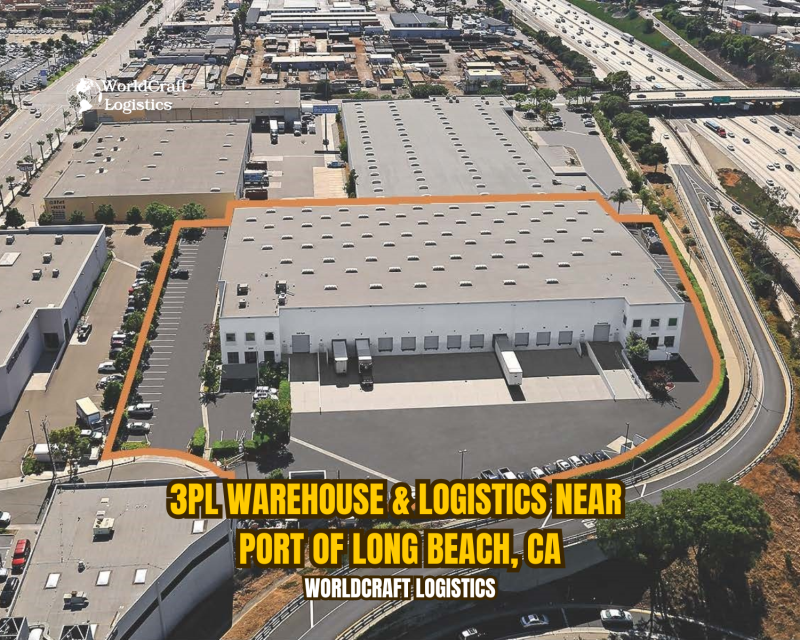
Warehouse
12/30/2024
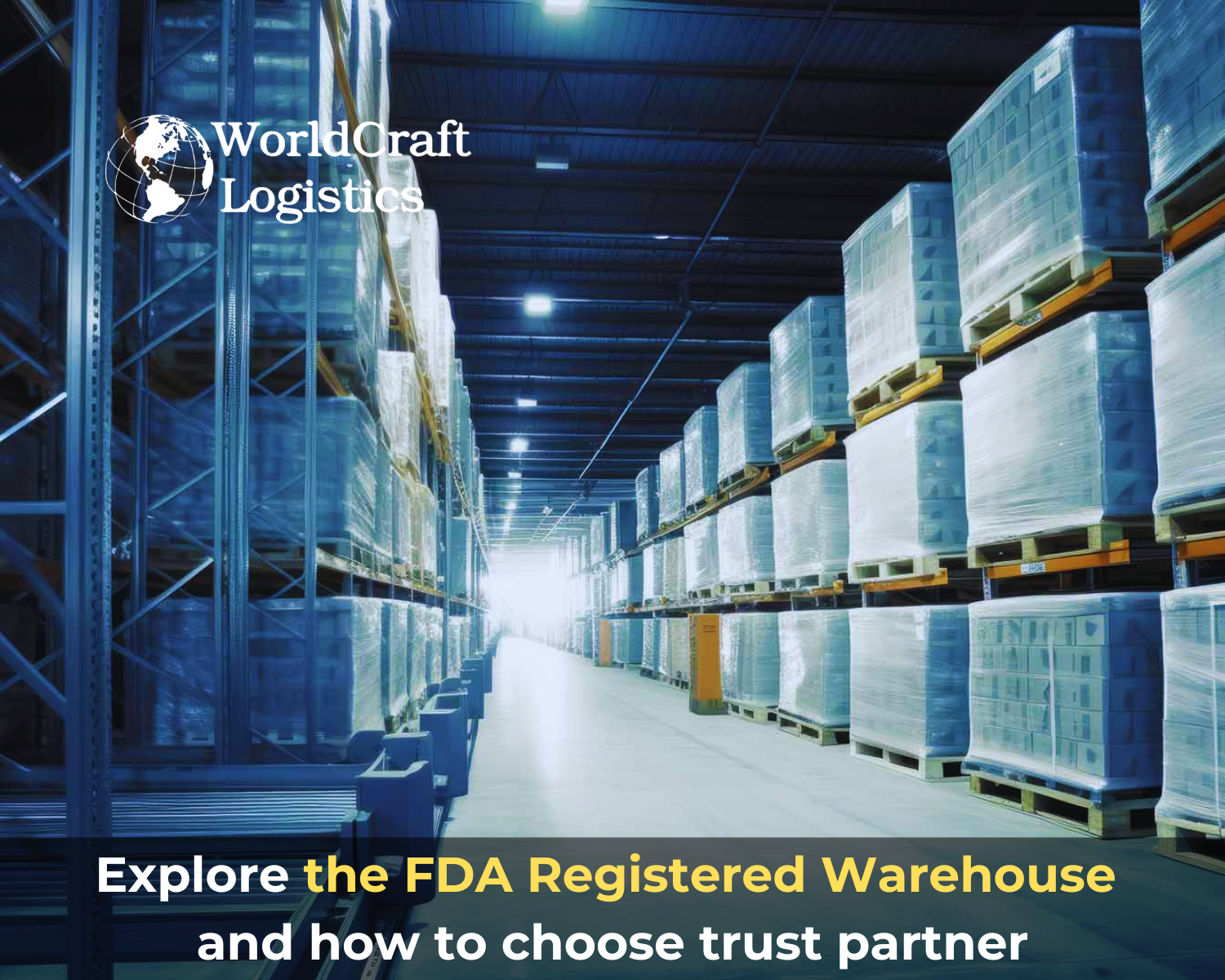
Warehouse
06/16/2024
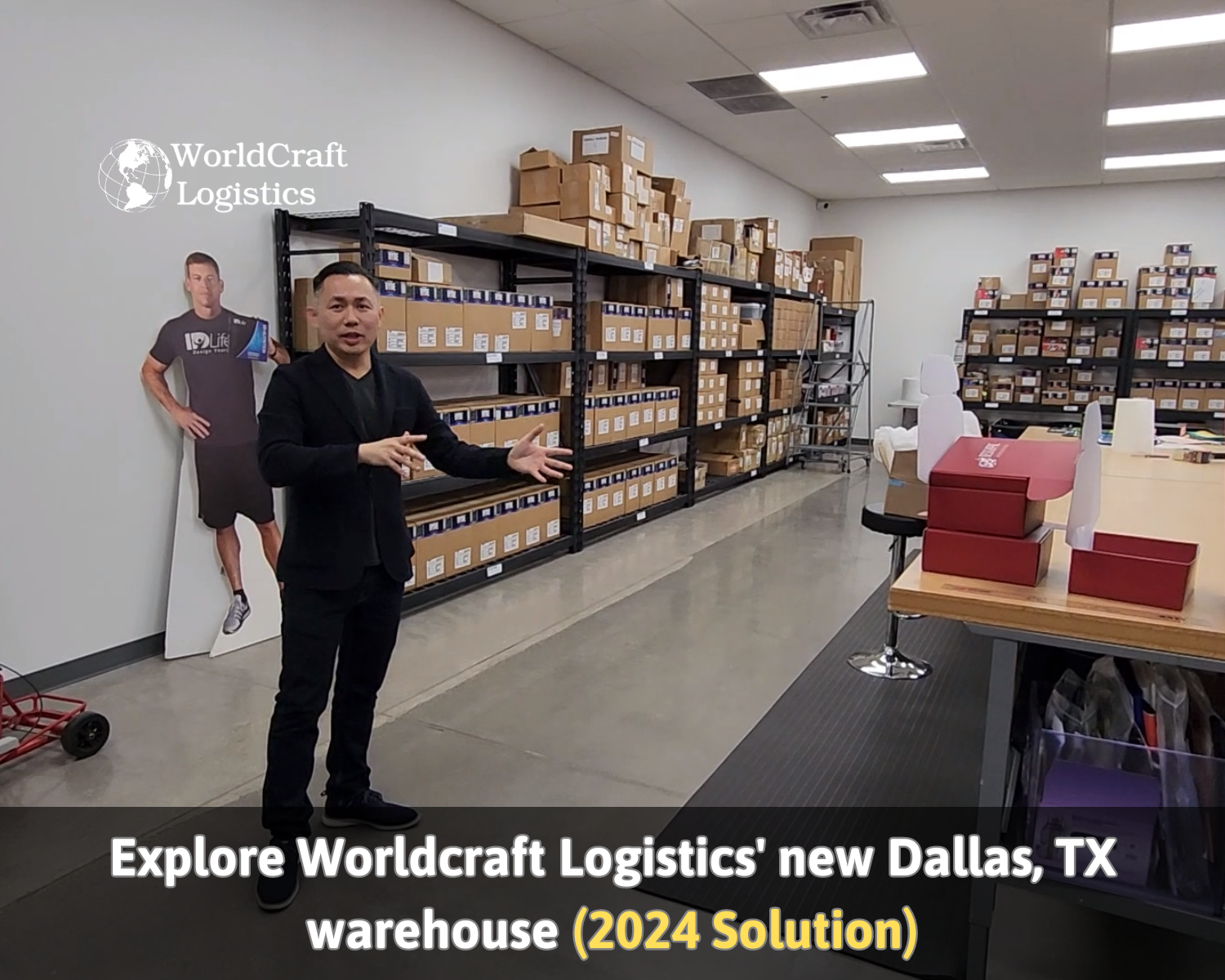
Warehouse
03/03/2024
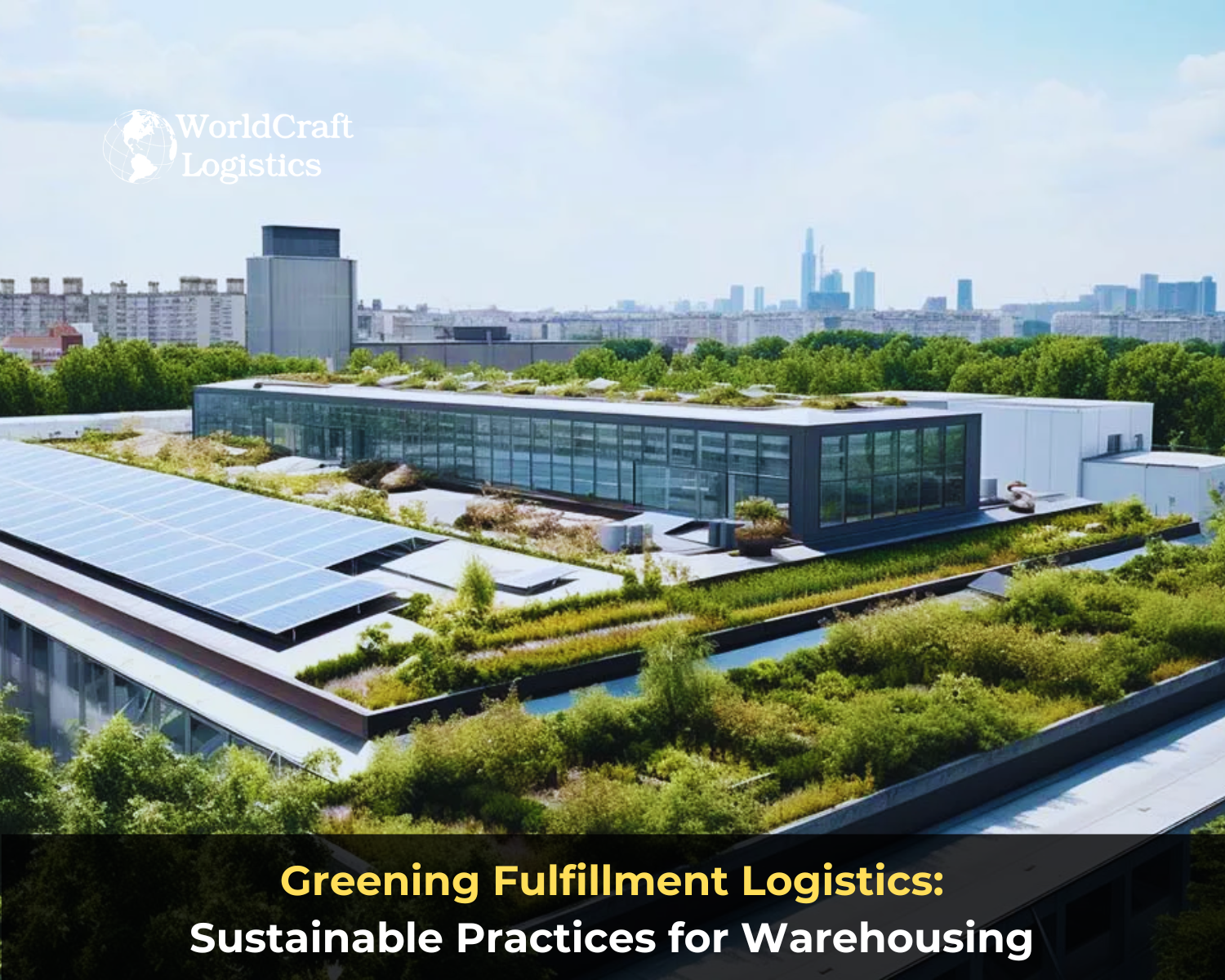
Warehouse
08/25/2024
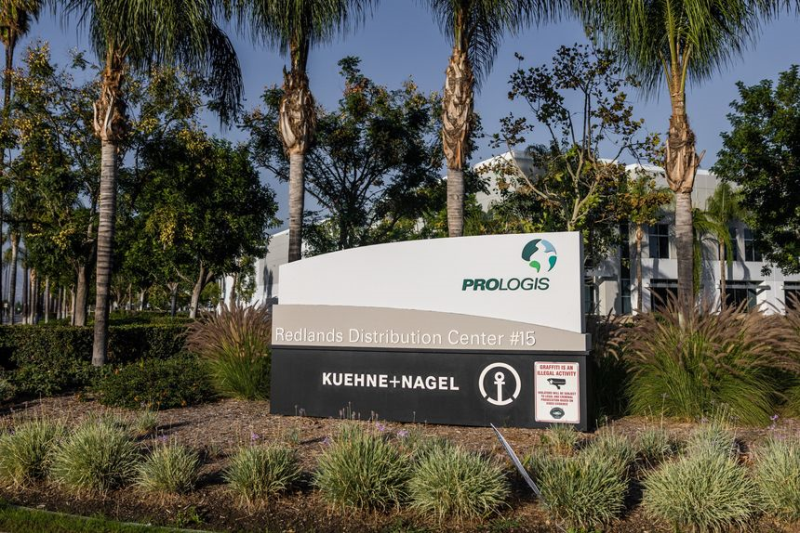
Warehouse
02/20/2023